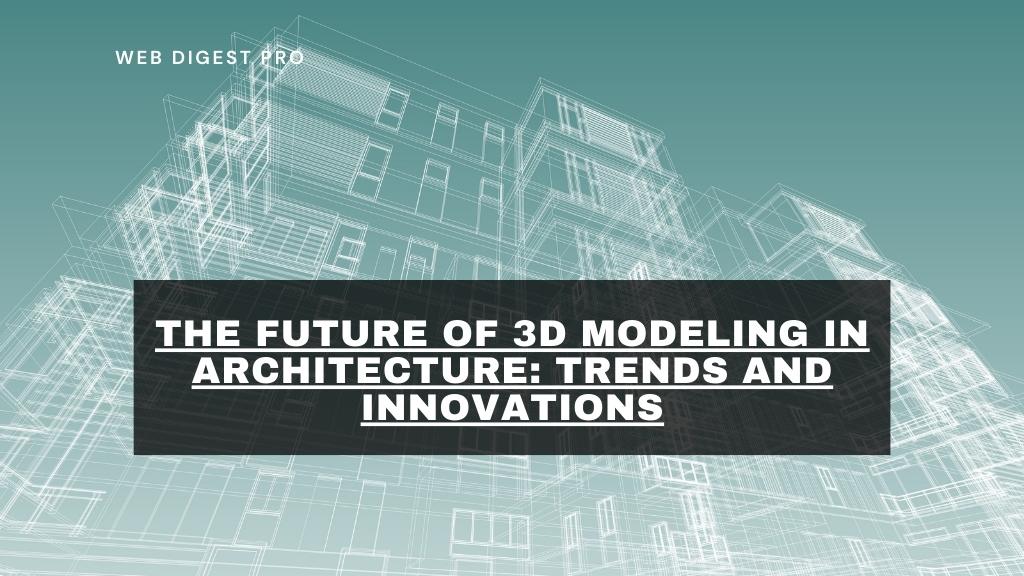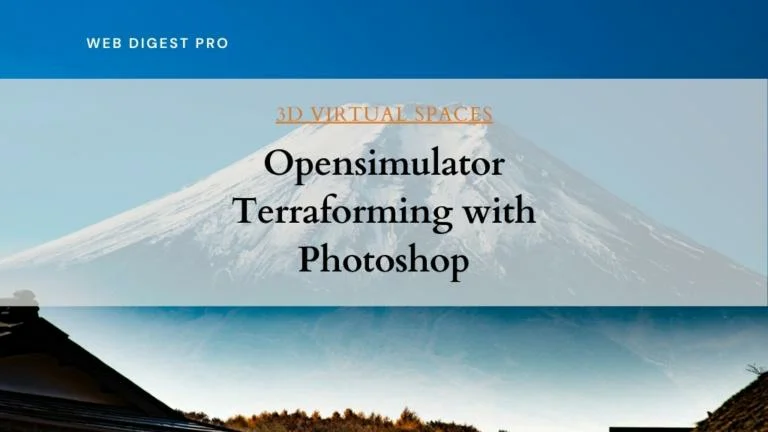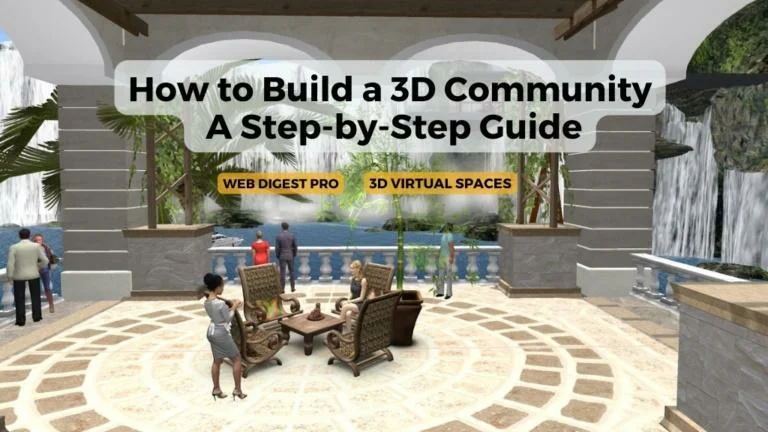The world of architecture is evolving rapidly, driven by technological advancements that are reshaping how we design and construct buildings. Among these advancements, interactive 3D virtual technology stands out as a transformative force. This article explores the future of 3D modeling in architecture, focusing on emerging trends and innovations, particularly in virtual technology.
Evolution of 3D Modeling in Architecture
3D modeling has come a long way:
Early Methods Initially, architects relied heavily on physical models and 2D blueprints to visualize their designs. These traditional methods, while effective to a degree, were time-consuming and limited in scope. Physical models were labor-intensive and lacked the flexibility to make rapid adjustments, while 2D blueprints required a high level of abstraction to interpret spatial relationships.
CAD Revolution The introduction of computer-aided design (CAD) in the late 20th century revolutionized architectural practice. CAD allowed for more precise and flexible modeling, enabling architects to create detailed and accurate representations of their designs. This digital shift not only improved the accuracy of architectural plans but also streamlined the design process, reducing time and cost.
Key Milestones Significant advancements such as parametric design and the integration with Building Information Modeling (BIM) have further enhanced 3D modeling. Parametric design allows architects to define complex shapes and structures using algorithms, leading to more innovative and efficient designs. BIM integrates 3D models with extensive project data, enabling comprehensive planning and management throughout the building lifecycle.
Current State of 3D Modeling
Today, 3D modeling is integral to architecture:
Leading Software Architects today rely on a suite of advanced software tools to create their 3D models. Leading tools like AutoCAD, SketchUp, and Revit are widely used across the industry. These platforms offer a range of features that facilitate the creation, modification, and optimization of architectural designs.
Applications 3D modeling is used in various stages of the architectural process:
- Visualization: 3D models help architects visualize their designs in a realistic and detailed manner. This visualization is crucial for understanding the spatial dynamics and aesthetic qualities of a design.
- Simulation: Advanced 3D models can simulate how buildings will perform in real-world conditions, including structural integrity, energy efficiency, and environmental impact.
- Virtual Walkthroughs: Architects can create virtual walkthroughs to give clients and stakeholders an immersive experience of the proposed design, enhancing communication and engagement.
Benefits These applications offer significant benefits:
- Improved accuracy and precision in design.
- Enhanced communication with clients and stakeholders.
- Greater flexibility to experiment with design variations and innovations.
Emerging Trends in 3D Modeling
Real-time Rendering and Visualization One of the most exciting trends in 3D modeling is the rise of real-time rendering tools. Platforms like Unreal Engine and Unity allow architects to create hyper-realistic models that can be explored in real-time. This capability is transforming the design process by enabling instant feedback and iteration. Architects can make changes on the fly and immediately see the impact of those changes, leading to more dynamic and responsive design workflows.
Generative Design Generative design, powered by AI and machine learning, is another game-changer in the field of 3D modeling. This technology uses algorithms to generate multiple design options based on specific constraints and objectives. Architects input parameters such as spatial requirements, material limitations, and environmental considerations, and the AI generates optimized design solutions. This process not only expands the range of possible designs but also enhances efficiency by identifying the best solutions more quickly.
BIM Integration The integration of 3D modeling with Building Information Modeling (BIM) is becoming increasingly common. BIM provides a comprehensive approach to project management by incorporating all aspects of the building lifecycle, from initial design to construction and maintenance. By integrating 3D models with BIM, architects can achieve better coordination and collaboration across different project phases. This integration helps to minimize errors, reduce costs, and ensure that all stakeholders are working with the most up-to-date information.
Innovations in Virtual Technology
Virtual Reality (VR) Virtual reality is revolutionizing architectural visualization. By using VR headsets, architects and clients can immerse themselves in a virtual environment, experiencing the space as if it were already built. This immersive experience helps in making more informed design decisions and improves client engagement. VR allows for a true sense of scale and spatial relationships, which can be difficult to grasp through traditional 2D drawings or even 3D models on a screen.
Augmented Reality (AR) Augmented reality is enhancing on-site construction and visualization. AR applications allow architects to overlay digital models onto the physical world, providing a real-time view of how the final structure will look. This technology is particularly useful for identifying potential issues and making adjustments during the construction phase. For example, AR can help to visualize the placement of structural elements, ensure that installations are correctly positioned, and detect clashes or discrepancies early on.
Mixed Reality (MR) Mixed reality combines elements of both VR and AR, creating a hybrid environment where digital and physical objects interact. This technology offers unprecedented possibilities for collaborative design, allowing teams to work together in a shared virtual space while interacting with physical elements. MR can facilitate remote collaboration, enabling architects, engineers, and clients to meet in a virtual environment, review designs, and make decisions collectively, regardless of their physical locations.
Future Prospects
AI and Machine Learning Looking ahead, AI and machine learning will play a significant role in automating and enhancing 3D modeling processes. These technologies can analyze vast amounts of data to provide insights and optimizations that were previously unimaginable. For example, AI can predict how different design choices will impact building performance, helping architects to create more efficient and sustainable designs. Machine learning algorithms can also streamline routine tasks, allowing architects to focus more on creative and strategic aspects of their work.
Cloud Computing Cloud-based solutions are set to revolutionize collaborative architectural projects. By storing and processing data in the cloud, architects can access their work from anywhere, facilitating seamless collaboration and data management. Cloud computing enables real-time updates and version control, ensuring that all team members are working with the most current information. This approach also supports more efficient resource management, as computational power can be scaled up or down as needed.
Sustainable Design Advancements in 3D modeling are also contributing to more sustainable architectural practices. By enabling precise simulations and analyses, architects can design buildings that are more energy-efficient and environmentally friendly. For example, 3D models can be used to simulate natural lighting, ventilation, and thermal performance, helping to optimize building design for sustainability. These tools also support the use of sustainable materials and construction methods, reducing the environmental impact of building projects.
Challenges and Considerations
Despite the promising future, there are challenges to address:
Technical Barriers One of the primary challenges is the need for high-performance computing resources. Advanced 3D modeling and simulation require significant computational power, which can be a barrier for smaller firms or individual architects. Additionally, the rapid pace of technological change means that professionals must continually update their skills and knowledge to stay current with the latest tools and techniques.
Ethical and Legal Issues There are also important ethical and legal considerations. Data privacy and intellectual property rights are critical issues in the digital age. Architects must ensure that sensitive project data is protected and that intellectual property rights are respected. As AI and machine learning become more prevalent, there are also ethical questions around the use of these technologies, such as bias in AI algorithms and the potential for job displacement.
Conclusion
The future of 3D modeling in architecture is bright, filled with exciting trends and innovations that promise to transform the industry. From real-time rendering and generative design to VR, AR, and cloud computing, these technologies are enabling architects to push the boundaries of what’s possible. As we look to the future, it’s crucial for architects, designers, and technologists to embrace these advancements and contribute to their ongoing evolution. By doing so, they can create more efficient, sustainable, and innovative buildings that meet the needs of a changing world.
Discover the future of architectural design with MyStreamPro 3D Spaces—visit our website today to request a free demonstration!
Sponsored Links
Written by Dimitrios S. Sfyris, developer and founder of AspectSoft, a software company specializing in innovative solutions. Follow me on LinkedIn for more insightful articles and updates on cutting-edge technologies.
Subscribe to our newsletter!













+ There are no comments
Add yours